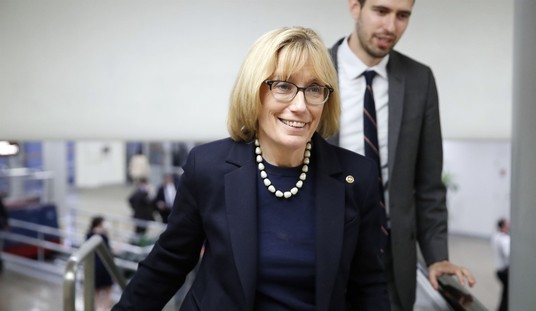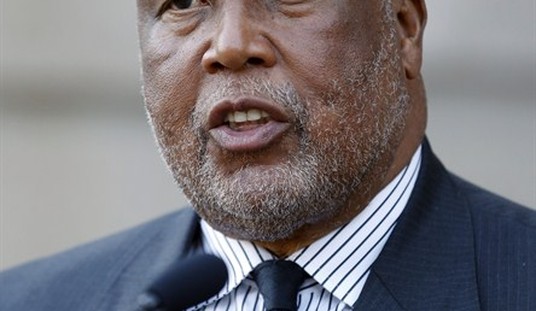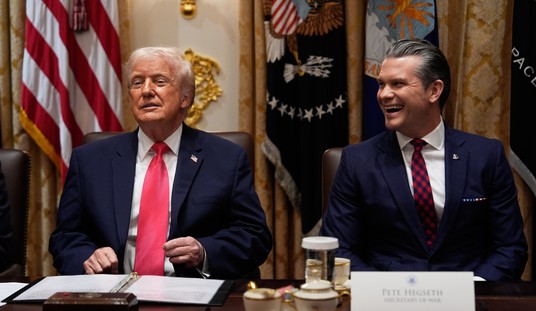Man is not a rational animal. He is a rationalizing animal. -- Robert Heinlein
What to make of the resolutely pro-choice The Washington Post's Style section travelogue following a woman who drove 407 miles to obtain a second-trimester abortion? Is this part of the campaign to destigmatize abortion? If so, they've chosen a very odd way to do it. Or perhaps Post writer Monica Hesse is a pro-life mole?
"Emily" is a married woman with a graduate degree and a good job living in Wyoming. When she and her husband learned of the pregnancy, they were "so excited." But later, he got into trouble -- a bar fight or something; the story leaves it vague. Because he had a criminal record, the couple was unsure whether he would get prison time.
Emily knew he could be sentenced to prison for a few weeks, a few months or more. If it was months, could she handle the pregnancy alone? If it was more, could she handle the baby?
This is a rough situation, no question. Ideally, couples should manage pregnancies and babies together. But the Post's story then presents about the most glaring omission imaginable in a story about abortion.
"There are other options," an acquaintance to whom Emily had confided mentions. Yes, writes Hesse. The first option was government assistance. To qualify for food stamps, Emily would have had to sell her car. "Emily tried to picture selling her beat-up sedan. ... A version of tenuous, exhausted motherhood stretched out in front of her."
Hesse doesn't mention the Women, Infants and Children program (WIC), which provides supplemental food and vitamins, counseling, and, according to the Wyoming Department of Health website, referrals for other programs like "Public Health Nursing, dentists, and programs like SNAP (Food Stamps), POWER, Medicaid, Kid Care CHIP, Best Beginnings, Children's Special Health Services, Head Start, Cent$ible Nutrition Program, day care, and fuel assistance." In Wyoming, the income eligibility for the WIC program as of July 2014 begins at $21,590.00 or less in yearly income for a one-person household. Hesse mentions none of this.
Recommended
She then moved directly to "Option two": the Missoula abortion clinic where the people "sounded kind."
That's it. Two choices. Not a word about adoption. Not a word about crisis pregnancy centers (I found 10 in Wyoming in a cursory search). Not a word about the long waiting lists of infertile couples hoping to adopt.
Hesse quotes Emily: "Children deserve so much. And if you don't start with a solid platform, how can you ever give them that? I'm sure I could have done fine, eventually."
In the midst of the abortion -- after the drugs had been administered and the contractions and vomiting began, but before the surgery -- Emily's husband called with good news. He had received a hearing date, and his lawyer believed he would get only probation. Clutching her abdomen, she told him, "It's too late."
Emily doesn't seem to be a callous person, far less a moral monster, but she has been shaped by the times. In the recovery room, she wrote a note to her baby: "I loved my baby ... dearly, and I hope in the coming years I will believe that this was the best decision for both of us."
It's a little hard to imagine that the child, had he or she been able to speak, would agree. The conscience is a cooperative master, easily mollified by the flimsiest justification. She wanted the best for her child, and if she couldn't give that, then ... death?
Why do I say Hesse might be a mole? Read this second paragraph, where the journey to the abortion clinic begins, and judge for yourself:
"It was 3:21 in the morning ... the mountains ... were dark, and when Emily first moved here she thought the landscape was so pretty, and now it just seemed lonely. She turned off one road onto the next. ... A deer darted into the street. She braked until it passed, a fawn lit by her headlights, running toward the bushes across the road. 'Oh, it's a baby,' she said, and there were 406 miles left to go."
























Join the conversation as a VIP Member